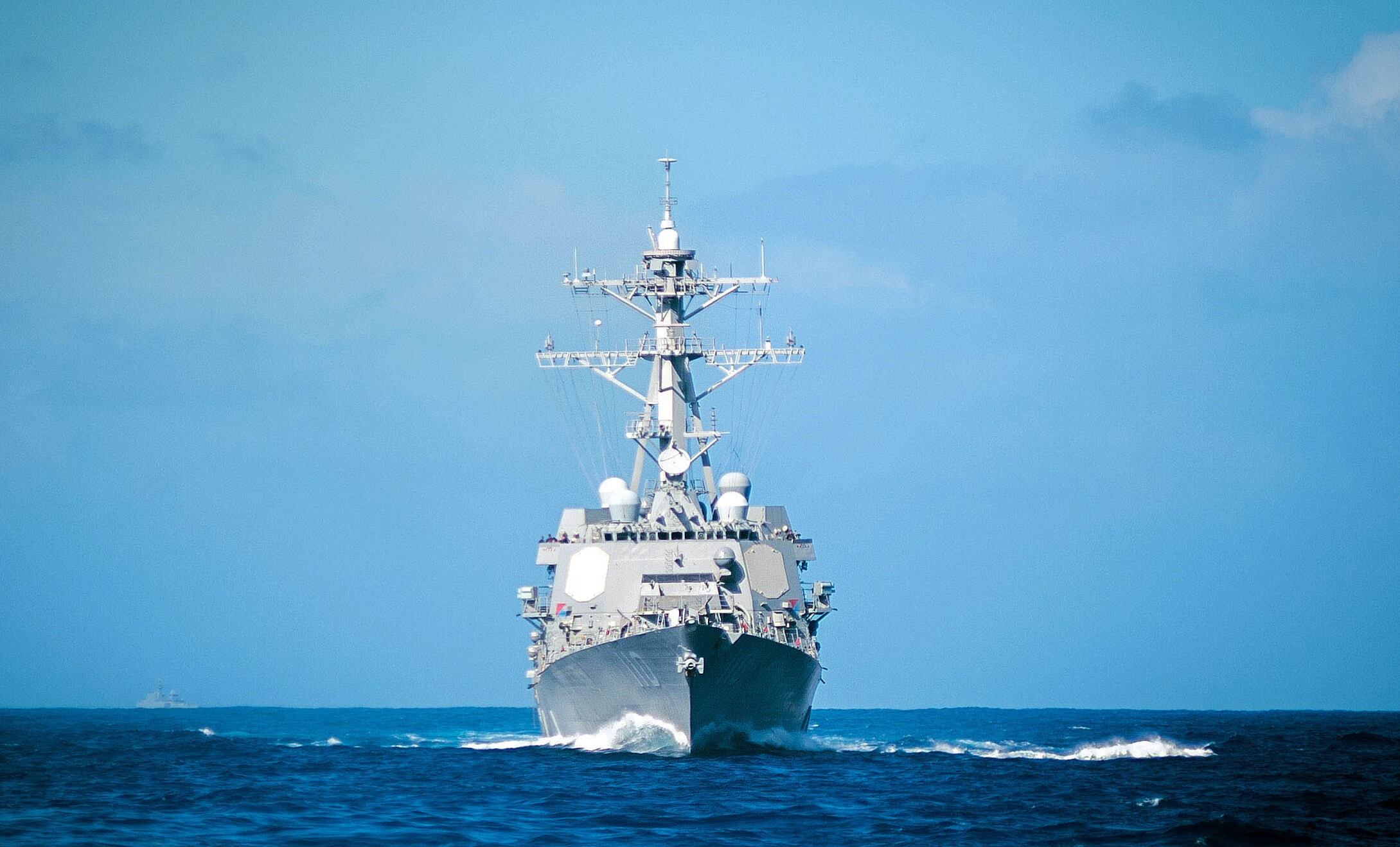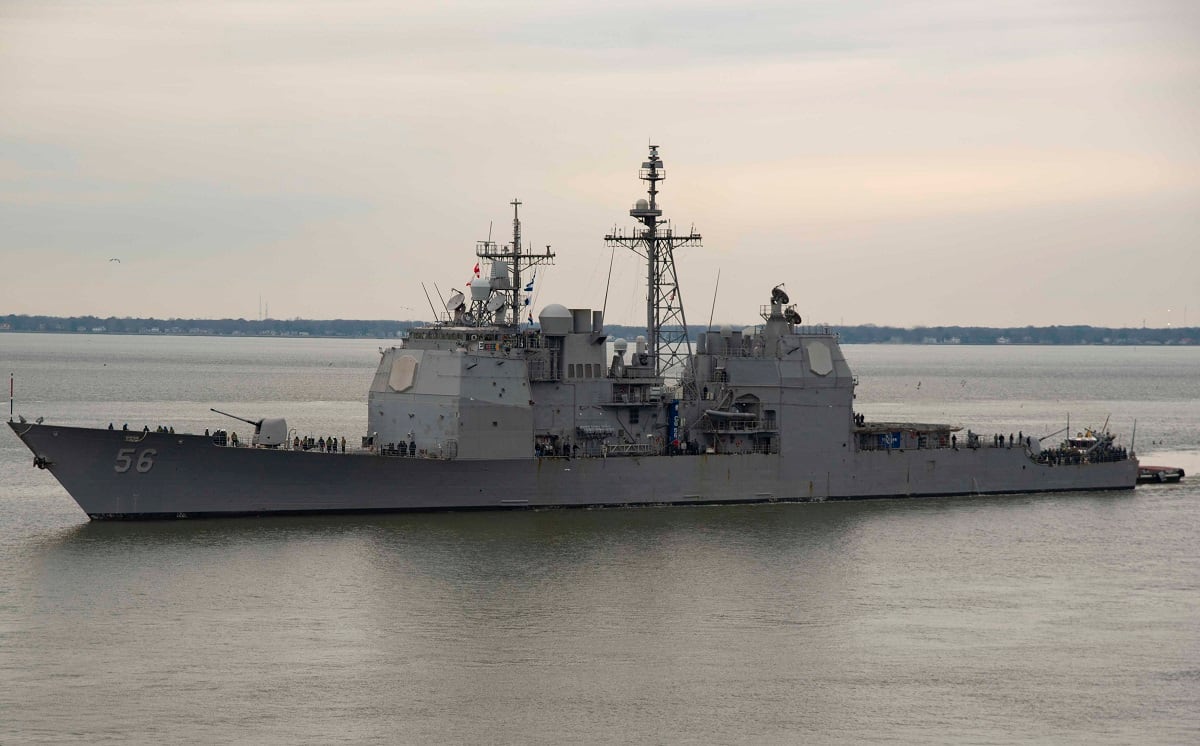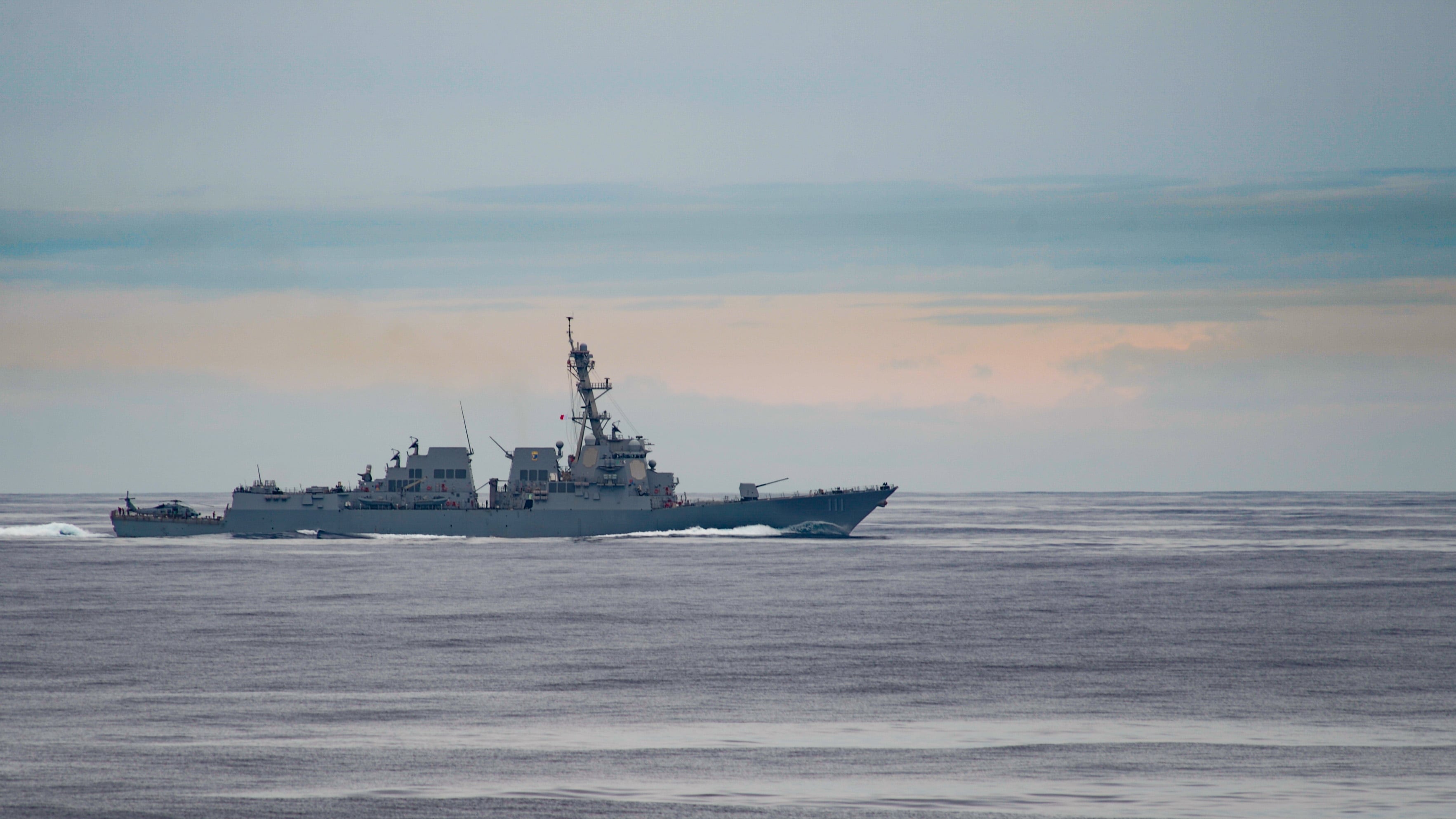WASHINGTON — The Department of Defense has sent a plan to the White House that would cut the construction of more than 40 percent of its planed Flight III Arleigh Burke destroyers in fiscal 2021 through 2025.
In total, the proposal would cut five of the 12 DDGs planned through the Future Years Defense Program, or FYDP. That plan also amounts to a cut of about $9.4 billion, or 8 percent, out of the total shipbuilding budget, according to a memo from the White House’s Office of Management and Budget to the Defense Department. The memo, obtained by Defense News, additionally outlined plans to accelerate the decommissioning of cruisers, cutting the total number of Ticonderoga-class cruisers in the fleet down to nine by 2025, from a planned 13 in last year’s budget.
The Pentagon’s plan would shrink the size of the fleet from 293 ships today to 287 ships, the memo said, which stands in contrast to the Navy’s goal of 355 ships. The 355-ship goal was made national policy in the 2018 National Defense Authorization Act.
RELATED

The memo comes on the heels of a wave of rhetoric from the Navy and the highest levels of the Trump administration that the goal remains 350-plus ships, and the memo directs the Pentagon to submit a “resource-informed” plan to get to 355 ships, though it’s unclear how that direction might affect the Navy’s calculus with regard to destroyer construction. The document gives the Navy a degree of wiggle room to try and redefine what counts as a ship.
“OMB directs DOD to submit a resource-informed plan to achieve a 355-ship combined fleet, including manned and unmanned ships, by 2030,” the memo read. “In addition to a programmatic plan through the FYDP and projected ship counts through 2030, DOD shall submit a legislative proposal to redefine a battleforce ship to include unmanned ships, complete with clearly defined capability and performance thresholds to define a ship’s inclusion in the overall battleforce ship count.”
Destroyers are built by General Dynamics Bath Iron Works in Maine and by Huntington Ingalls Industries in Pascagoula, Mississippi. Each destroyer costs an average of $1.82 billion based on the Navy’s 2020 budget submission, according to the Congressional Research Service.
A Trump administration official, speaking on condition of anonymity, said the Navy’s proposed plan to shrink the fleet is primarily driven by the Office of the Secretary of Defense, and that OMB is strongly behind the president’s goal of 355 ships.
“OMB strongly supports 355 [ships] and is working with the Navy on it,” the official said. “OSD seems to be the most opposed to it.”
A Navy spokesman declined to comment on the contents of the memo, saying it was related to a budget still in development and was “pre-decisional.” The military has a policy of refusing to comment on budget matters before they’ve been submitted to Congress.
RELATED

Cruisers (again)
The fate of the cruisers has been a nearly annual fight on Capitol Hill, as the Navy has desperately tried to divest itself of the troublesome ship type, though this year’s proposed cancellation of six cruiser modernization plans did not make a stir in Congress.
The cruisers are the largest surface combatants in the Navy’s inventory, and they have become increasingly difficult to maintain. Cruisers have 26 more vertical launching system, or VLS, cells per hull than their Arleigh Burke Flight IIA destroyer counterparts, and 32 more than the Flight I Burkes.
Cruisers act as the lead air defense ship in a carrier strike group. But as they age, the fleet must manage cracking hulls, aging pipes and struggling mechanical systems, among other issues. The ships’ SPY-1 radars have also been difficult to maintain, as components age and require regular attention from technicians.
Last year, the Navy proposed canceling the modernization of Bunker Hill, Mobile Bay, Antietam, Leyte Gulf, San Jacinto and Lake Champlain in 2021 and 2022. The new proposal would accelerate the decommissioning of the Monterey, Vella Gulf and Port Royal to 2022, which would cut between three and seven years off each of their planned lives. The plan would also advance the decommissioning of the Shiloh to 2024 — three years earlier that previously planned.

The service’s past efforts to shed the cruisers to save money repeatedly drew the ire of former House Armed Services Committee Seapower and Projection Forces Sbcommittee Chairman Randy Forbes, R-Va., who didn’t trust the Navy to keep the ships in service and therefore wrote clear language into several National Defense Authorization Act bills prohibiting the move.
The Navy ultimately agreed to the so-called 2-4-6 plan in 2015, which allowed the service to lay up to two cruisers a year, for no more than four years and allow no more than six of the ships to undergo modernization at any one time.
‘Making a case’
The 2030 deadline for 355 ships as mentioned in the OMB memo was first laid out earlier this month by acting Secretary of the Navy Thomas Modly in a speech at USNI’s Defense Forum.
“[Three hundred and fifty-five ships] is stated as national policy,” Modly told an audience on Dec. 5. “It was also the president’s goal during the election. We have a goal of 355, we don’t have a plan for 355. We need to have a plan, and if it’s not 355, what’s it going to be and what’s it going to look like?
“We ought to be lobbying for that and making a case for it and arguing in the halls of the Pentagon for a bigger share of the budget if that’s what is required,”
The speech was followed by the president’s national security adviser, Robert O’Brien, at the Reagan National Defense Forum, where he said President Donald Trump was serious when he committed to a 350-ship Navy.
“When President Trump says a 350-ship Navy, he means a 350-ship Navy, and not decades from now,” O’Brien said.
RELATED

Bryan McGrath, a retired destroyer captain and analyst with defense consultancy The Ferrybridge Group, said the plan to reduce the size of the fleet is a sign that the Defense Department isn’t willing to put the resources required toward growing the fleet.
“If what you are reporting is true, this is a sign of the tension between the grand desires for a much larger fleet and the modest resources being applied to the problem,” McGrath said. “There simply is no way to grow the fleet as it is currently architected while maintaining the current fleet at a high state of readiness with the given resources."
McGrath said if 355 is still the goal, the Pentagon has to either dramatically restructure the fleet to switch out large surface combatants such as cruisers and destroyers with smaller, less expensive ships, or it has to change what’s considered a ship; the Navy has cited both options in recent years.
“This is why it's so hard to grow a Navy,” McGrath said. “You have to decide it's a national priority, you have to devote a lot of resources and you have to do it over a period of years. None of that has happened.”
Dan Gouré , an analyst with the Arlington-based think tank The Lexington Institute and former Bush administration defense official, said trading existing force structure for unproven technologies such as unmanned ships that may pan out down the road is a classic Pentagon trap that rarely pans out.
“It sends a bit of a chill up my spine to hear that the Navy may be considering cutting a bird in the hand for a theoretical eagle down the road,” Goure said. “That almost never works. I’ve been doing this long enough, 40 years of this. Tell me when that’s ever really worked.”
David B. Larter was the naval warfare reporter for Defense News.








